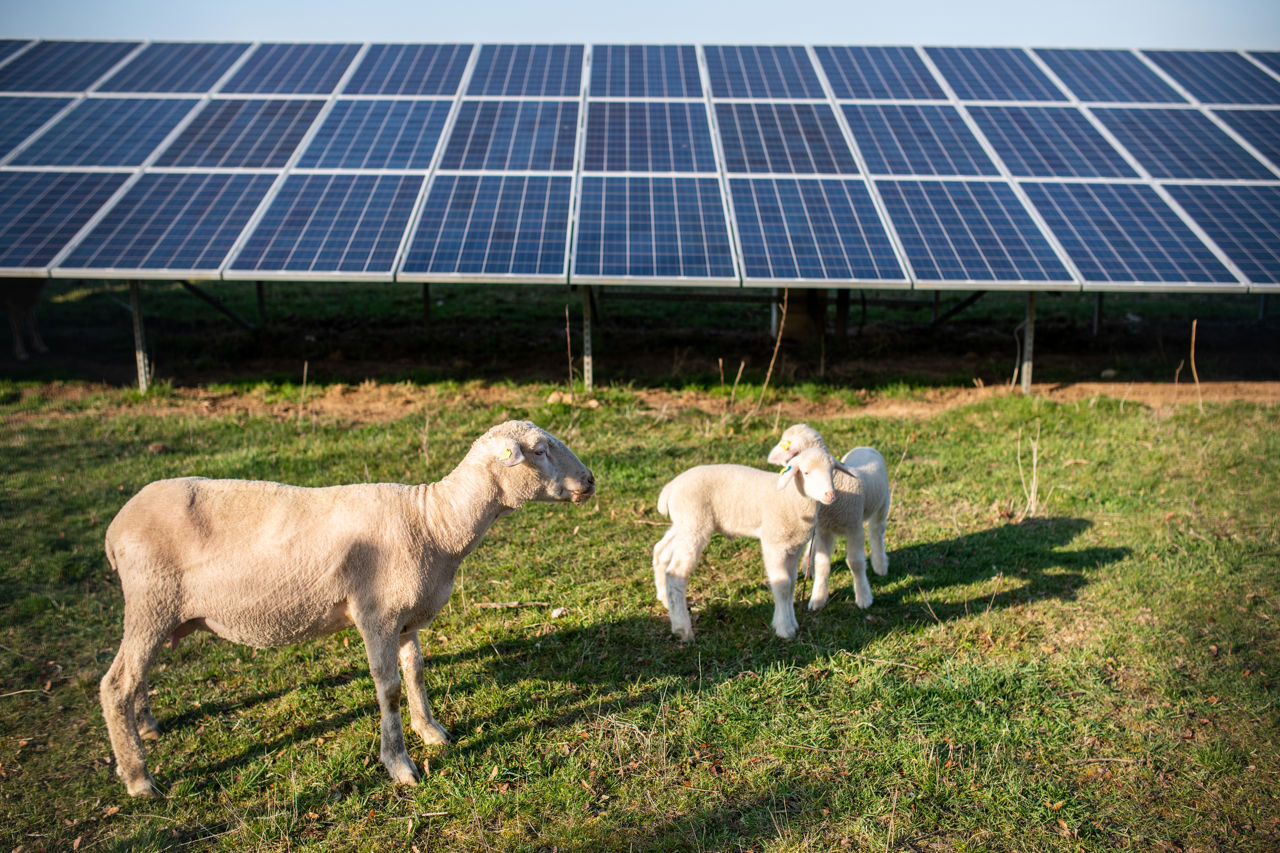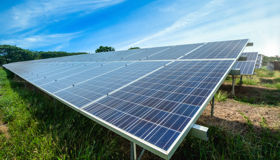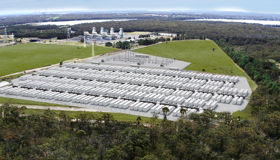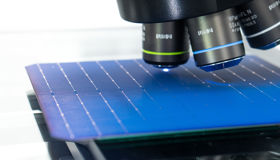
Blind Creek project boosts NSW energy transition
Regenerative agriculture, solar and storage a winning combination
The Blind Creek Solar and Battery Project is uniquely positioned on a strategic part of the existing transmission network near Bungendore, NSW, between the major load centres of Sydney and Canberra. With up to 350 MWac solar and 300 MW battery storage capacity, the project aims to make a significant contribution to the NSW energy transition without requiring major transmission works.
$5m
CEFC investment
350 MWac
solar + 300 MW storage
Award-winning
community engagement
We look forward to working with the local community to maximise the tangible, economic benefits from the project, including jobs, and the flow-on effects to local businesses. We believe hybrid solar, storage and agriculture projects are the best way to optimise firmed generation and land usage.Sonia TeitelCo-Head of Investment and Development, Octopus Australia
Our investment
The CEFC has committed $5 million to the Blind Creek Solar and Battery project, a farmer-led development that combines understanding of the land, farming practices and knowledge of the local community with renewable energy expertise.
The CEFC investment is part of a joint venture with Octopus Australia to develop renewable energy assets in regional Australia. Octopus Australia is a subsidiary of the Octopus Group, which is one of the world’s largest investors in clean energy.
The CEFC and Octopus Australia are also co-investors in the Gippsland Renewable Energy Park and the Perry Bridge and Fulham solar projects in Victoria. The CEFC is also a cornerstone investor in the Octopus Australia Sustainable Investments (OASIS) Fund.
our impact
Hybrid solar, agriculture project optimises land use
The Blind Creek Solar and Battery project was founded by farmers with a multi-generational connection to the site and to the local community, together with a team of renewable energy experts. The project vision is to co-locate regenerative agriculture with solar, engage in genuine community consultation and include the community in the project’s financial benefits.
The project is working to achieve solar energy production that co-exists with organic grass-fed lambs, regenerative agriculture, a soil carbon sequestration project, restoration of biodiversity and green waste humus production.
Once built, the solar farm will produce enough energy to power approximately 124,000 houses.
From the outset our goal was to co-locate renewable energy with regenerative agriculture and carbon sequestration while maintaining sheep production. We also had a clear vision of how we wanted to involve our local community in the Project. Our relationship with Octopus and the CEFC means our commitment to create a more sustainable future for our family farm and positive outcomes for our community has taken an exciting step forward.Dominic OsborneFounder and Landowner, Blind Creek Solar and Battery Project
In its Australian Guide for Agrisolar, the Clean Energy Council said the integration of solar energy and grazing within a single site can maximise the productive use of rural land as well as reduce operating costs. Benefits include:
- Keeps the pasture down, reducing fire risk
- Contributes to a stronger vegetation management regime
- Reduces operation and maintenance costs through the avoidance of regular mowing services
- Reduction in herbicide application and reduced risk of potential damage caused by mechanical equipment
- Increased health and wellbeing of sheep due to protection from the elements
- Access to greener pasture, particularly during dry conditions or drought.
Sheep and panels go together
At Blind Creek, grass species suited to shade will be planted immediately under the panels for prime lamb grazing. Normal grass species and cover crop species will be planted in the areas between the panels. The solar farm will co-exist with rotational grass fed lamb production, allowing for very short periods of intensive grazing. Panel spacing is designed to allow tractor access and grassland enhancements for grazing lambs. The site is flat and sandy, with the project designed to allow animal production to continue on the land as it has for 155 years.
Award winner
The project won the 2022 Clean Energy Council Community Engagement Award for its benefit sharing scheme and agrisolar initiatives.
The Clean Energy Council acknowledged the project’s extensive community engagement process and its work with the local community to pioneer a scheme that will share $3.5 million in benefits with neighbours and the community over the project’s lifetime. The Clean Energy Council also recognised the agrisolar project for being “specifically designed to co-exist with sheep grazing, regenerative agriculture, a soil carbon sequestration project and biodiversity restoration.




